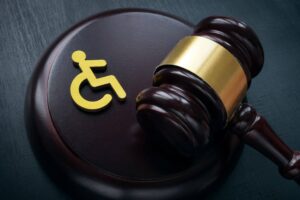In recent years, there has been significant advancement toward equality. But there is still a long way to go in many facets of our society, particularly when it comes to prejudice against persons with disabilities.

The Majority of Employees Are Self-Employed
The majority of employees in California and other states are considered “at-will” employees, which means that they are free to be fired at any time for any cause as long as it does not violate the law. Discrimination based on a protected characteristic, such as a disability, is an illegal reason for terminating someone.
To Prevail in A Case Involving Disability Discrimination, These Criteria Must Be Met
The first thing to bear in mind is that in order to be eligible to win, you must have a qualifying disability. This means that you must have a physical or mental disability, sickness, or condition that significantly lowers your quality of life and/or your ability to make a living.
Also, you must be able to carry out your tasks; if you are unable to do so, your termination can be seen as valid. Nonetheless, any reasonable adjustments that would enable you to continue working must be taken into account by your employer. If they don’t, your employer could be breaking the law.
Finally, there must have been a wrongful termination, which requires that your impairment, rather than another factor like poor job performance, was to blame.
The Challenges of Establishing Disability Discrimination
Few managers, supervisors, or employers will openly admit to firing someone for having a disability. The majority of people are educated enough to know that they cannot formally announce that they would not hire, promote, or fire an employee because of their disability.
Because of this, claims for discrimination and wrongful termination frequently rely on circumstantial evidence, also known as indirect evidence. The more circumstantial evidence there is of discrimination, the stronger the case and the better the chances an employee would win the case.
There are many ways to gather circumstantial evidence. If other employees displayed equivalent behavior but did not receive the same punishment, for example, there may be evidence that you were singled out because of your disability.
It could also be established by demonstrating the falsity of an employer’s explanation for a particular action. If your employer terminates you and claims that your position is no longer necessary, but then hires someone to take your place, it could be evidence of discrimination. If your employer refuses to provide reasonable accommodations you require to perform your job, you may also have evidence of disability-based discrimination.
Disability discrimination cases can be challenging, so you’ll need a lawyer with relevant experience. Our disability discrimination attorneys at PLBH are aware of the law and know how to apply it to your case. Call (800) 435-7542 for a free introductory consultation.
